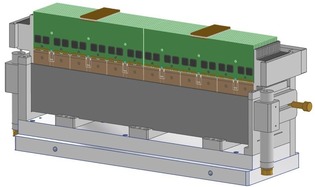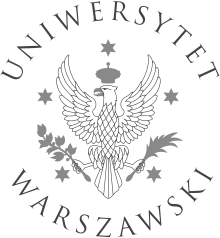Strong electromagnetic fields at the Faculty of Physics UW
2025-08-27

The Faculty of Physics at the University of Warsaw is a member of the international LUXE Collaboration, which is preparing an experiment at the Eu.XFEL laboratory in Hamburg. It aims to study the Quantum Electrodynamics (QED) in the regime of extremely strong electromagnetic fields. One of the signatures being searched for is creation of electron-positron pairs in collisions of a strongly-focused high-power laser beam with a high-energy electrons. A key element of the planned experiment is the high-density ECAL-P calorimeter, designed for precise measurement of the energy and spectrum of positrons. The Warsaw LUXE group is actively involved in its design and construction. From 8 to 12 September 2025, the Faculty of Physics at the University of Warsaw will host the LUXE collaboration meeting and the ECAL-P detector team workshop. The event is organized by researchers from from the Particles and Fundamental Interactions Division: Prof. Aleksander Filip Żarnecki, and Dr. Grzegorz Grzelak. The author of the project and the main executor of the mechanics of the ECAL-P calorimeter is Dr. Piotr Zbinkowski from the IFD Mechanical Workshop.
The Faculty of Physics at the University of Warsaw is a member of the international LUXE (Laser Und XFEL Experiment) Collaboration. The project involves a groundbreaking experiment in the Eu.XFEL laboratory in Hamburg. It aims to study the Quantum Electrodynamics (QED) in the regime of very strong fields.
During the experiment, a high-power laser beam (350 TW) is planned to collide with a high-energy electrons (16.5 GeV). As a result of this collision, an electric field with an intensity exceeding the critical value of 1018 V/m will be generated for the first time under laboratory conditions. In such strong fields, spontaneous creation of electron-positron pairs (e⁻e⁺) occurs, A phenomenon known as “tunneling out of vacuum”. Depending on the intensity of the laser beam, more than a million particle pairs can be created in a single collision. A so-called “boiling of vacuum” then occurs in the laser focal point.
One of the key elements of the LUXE experiment is a high-density electromagnetic calorimeter, ECAL-P, designed to precisely measure the energy and spectra of positrons produced during collisions. The sandwich structure of the calorimeter consists of several layers of 3.5 mm-thick tungsten absorber plates interleaved with 320 micron-thick silicon sensors. The Faculty of Physics, University of Warsaw, is responsible for the design and construction of all mechanical components of the calorimeter, including high precision support for the tungsten absorber and silicon sensors. In June 2025, first tests of the prototype calorimeter incorporating the mechanical structure built in Warsaw were carried out on a test beam at the DESY facility in Hamburg. During the week-long testing all major components of the calorimeter were successfully tested, collected were approximately 30 TB of data containing more than 300 million events.
Members of the collaboration will come to Warsaw in September to take part in the LUXE collaboration meeting followed by the workshop of the ECAL-P detector group. LUXE collaboration meeting (September 8-10) will be devoted to the review of design studies, prototype construction and tests of different components of the experiment, as well as to scheduling of future activities. Recent results of theoretical and simulation studies will also be presented. ECAL-P workshop (September 10-12) will focus on the analysis plans of the recently collected test data. Also discussed will be design, prototyping and test plans aiming to the construction of the ultimate detector.





